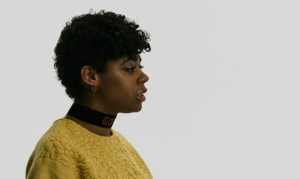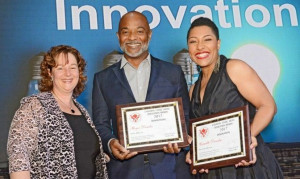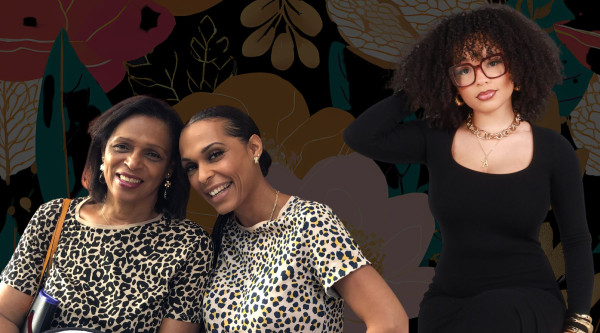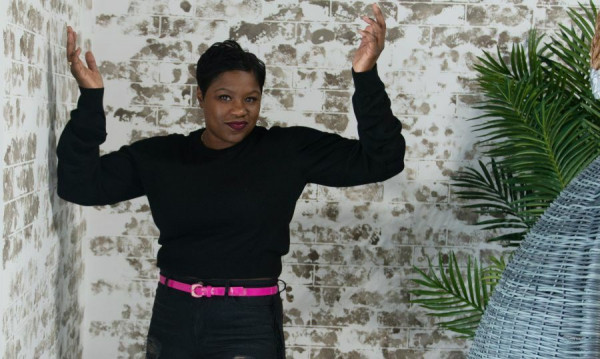T’kehya has also carved a niche in providing natural hair wigs to women recovering from cancer and alopecia. You would be surprised to learn that chemotherapy clinics have pretty much zero resources or referrals when approached by Black women seeking wigs that actually match their natural hair. T’Kehya is trying to change that, by helping Black women look like themselves again.
T’kehya first taught herself how to style and care for natural hair in elementary school. I wanted to know more about how she ended up specializing in the type of hair that for so long has been considered “undesirable”.
Tell me more about T'kehya as an elementary school girl doing hair. Were you the go-to stylist on the playground?
Well, I was always a pretty creative kid growing up. Back then when we didn't have smartphones, fidget spinners, or laptops, I relied on gimp, mini sewing projects, and origami to keep me entertained. Then it was eventually in my elementary school years that I learned how to cornrow. I picked up the skill pretty quickly and started reaching out to my friends for some extra lessons in cool and intricate designs, so I could show off to my peers. From there I sort of developed a reputation in my school for being the "hair girl." My young clients would meet me in the schoolyard to get their fresh "braid up." I even remember doing my friends' hair in class (which I wouldn't advise any children to do).
Doing hair brought me so much joy and I always wanted to learn more about it. After a while, I started experimenting on my family members, as well as some kids that lived in my building, which certainly came with quite a few mishaps. For example, I actually remember cutting someone's bang into a fringe and making it uneven (which was not the intended look). Luckily, because she was so young at the time and her mother started relying on me to do her hair, it was immediately forgiven.
I'd say, even 10 years go, natural hair wigs were pretty much non-existent. Most Black women were strictly buying wigs for straight lengths. What do you think has changed with Black women and natural hair?
You are very right about that. I think that wigs in general have developed such a bad rep. For the longest time, people would associate wigs with something their grandma or aunty would wear. Even now when I tell certain people about my business they're pretty shocked to learn that I'm in the field of wig making. The hair industry, primarily the Black hair industry, has definitely seen extraordinary changes in the last 10 years, from the record-breaking decline of relaxers, and the rise of women "going natural", to even the growing natural hair care lines available for men. There have definitely been a lot of changes, and people within the Black community are educating themselves a lot more about their hair.
For years natural hair care wasn't really promoted, and now the market around natural hair has even inspired the introduction of natural textured extensions and wigs. This has certainly worked in my favour since there are more distributors available that provide natural textured extensions. For the first time, there is a virgin hair market on the rise that caters to women who want to protective style while also staying true to their texture. No longer do women need to press and flatten their hair to blend with their extensions (I wish I was this lucky when I burnt my hair off back in 2010). Even so, also for the first time, women with naturally textured hair who are afflicted with hair loss, have hair enhancement options that are true to their texture. Nevertheless, although much has changed, there still aren't enough companies out there that offer this same variety.
What's your own hair journey been like, and what has it taught you?
My hair journey has been a lifetime journey and it has taught me so much about my natural beauty. At 13 my mom first had the "relaxer talk" with me, which I'm sure a lot of us Black girls experienced at that age. She said I reached puberty and so I was old enough to get a relaxer and asked me if I wanted one. To that question, I responded with an abrupt no. It was also around that time that I was learning more about hair, and so I decided then to start doing my hair myself. It was a lot of work at first, and I made plenty of mistakes with my hair. But despite all of that, everywhere I went, my hair started drawing attention, and people wanted to know where I got my hair done. When I would tell my hair admirers that I actually did my hair myself, I quickly started developing a small client base.
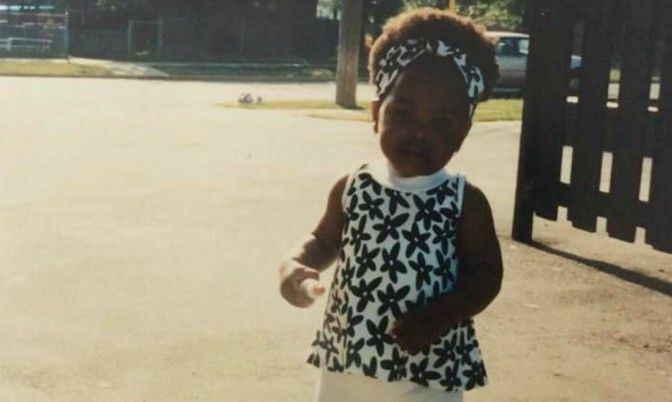
T’kehya as a toddler, rocking her natural hair
Over the years I kept learning and researching more about hair, and I found myself running a little side business while I was studying at university. Eventually, with the stress of school, I no longer had as much time to deal with my hair, and so I started experimenting with flat ironing and weave. Then my hair ended up getting much worse. Also just to note, around this time (between 2008-2009) there wasn't really much variety when it came to natural hair products. There was mostly the option of Blue Magic, Cantu Shea Butter, and Kenekelon Hair available in stores. As a result, my hair started to suffer. I even remember part of my hair burning off when I flat ironed it, and eventually my natural curl pattern just never came back. That's when I decided to cut it all off (2011) and start anew. The rest is history from there.
Why did you decide to support women with cancer and alopecia?
I lost 2 family members to cancer in the same year, which also happens to be the year that I graduated from university (2013/14). At the time I had my sights on becoming a lawyer because I thought it would allow me to help defend people's rights. I always had a heart for social justice and helping people in need. No matter what career I ended up with I knew that this would always be an integral part of what I chose to do. Around the time I started my business, a friend of mine who suffers from alopecia asked me to make her a wig. I hadn't really created wig pieces before, so it was a new experiment for me. Nevertheless, I had a vision for how I wanted the wig to turn out, and so we went to the beauty supply store to pick up some materials.
After completing the wig, it didn't really look like what I envisioned, the hairline was way too far back and it was really tight. After spending several hours working on it that night (I started around 5 pm and I don't think I finished until about 3 am), it was complete. When my friend tried it on and found it to be a perfect fit, she loved it so much, she put on some makeup and we decided to snap a few pictures of her new look. After putting these pictures online friends started hitting me up on Facebook inquiring about the wig and if I had any more available. That switched a lightbulb in my brain. As a part-time natural hair hustler/stylist at the time, I started doing research on natural textured extensions and wigs, and eventually, I was inspired to create my business. Because of the experience I had with my alopecia afflicted friend, I decided that when I started my business I would reserve 20% of sales to sponsor wigs for women afflicted cancer and alopecia.
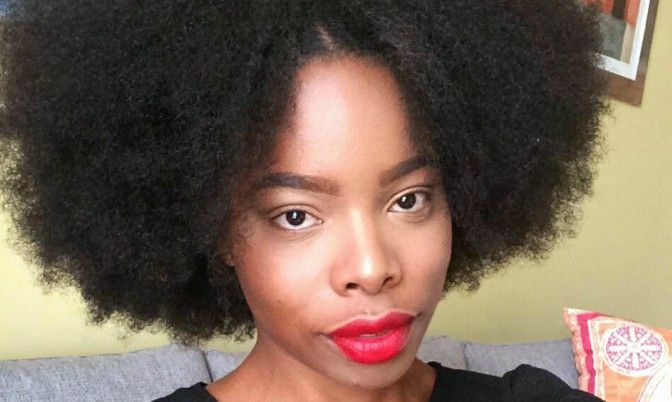
T’kehya Prentice-Cupid wearing one of her custom natural hair wigs
When did you realize that Black women with cancer or alopecia were not getting the same level of beauty care as everyone else?
It wasn't until I did more research and connected with women in those conditions that I learned how untapped the market was. I was told on different occasions by women of colour who overcame cancer that during their treatment they mostly relied on scarves to cover their hair in public. This was because the wigs available in hospitals didn't really resemble Black or textured hair. And so I knew that I needed to do something to help.
Tell me about the first time you helped a cancer survivor see herself with hair again, what was that like for you?
The first cancer survivor that I created a wig for just recovered from treatment and her hair started growing back. At the time, she requested a wig in order to help her hair grow back underneath, and also as a means of convenience. My mom actually paid for the materials for me to make her wig because I didn't want it to be at any cost to the client and when we did the fitting she was so happy. She also happened to attend my mother's church, and my mom always made sure to let me know whenever she wore her custom made wig. That made me realize that this was truly my calling and no matter how challenging it was to start this business from the ground up, I needed to keep it running for women like her.
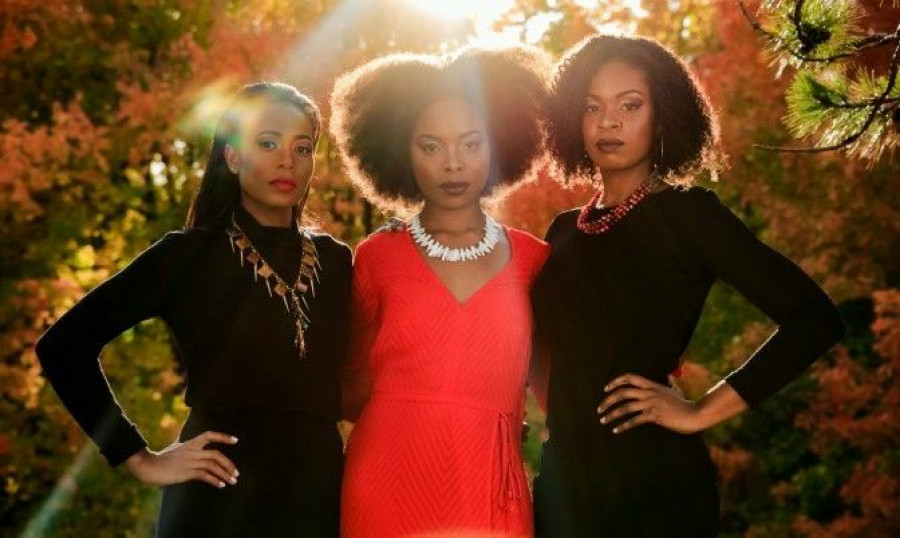
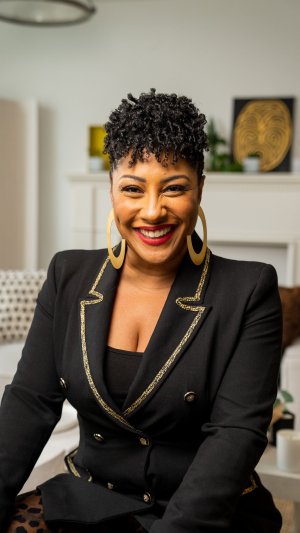 By
By 




